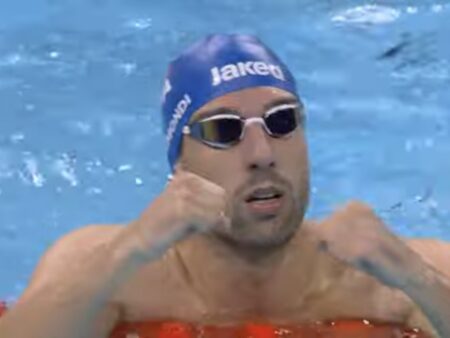
Milo Ventimiglia, best known for his roles in This Is Us and Heroes, took on a physically demanding role in the action-thriller movie Land of Bad. To prepare for his character, Ventimiglia underwent a challenging training regimen and followed a specific diet plan to ensure he was in peak physical condition. The actor’s preparation involved more than just hitting the gym; it encompassed strength training, cardiovascular conditioning, and mastering military-style manoeuvres. This article delves into the possible workout routine and diet Ventimiglia followed to build muscle, increase endurance, and authentically portray a soldier in the film.
1. Building the Foundation: Understanding the Role Requirements
To get into character, Ventimiglia had to consider several factors, such as carrying extra weight, manoeuvring through rough terrains, and maintaining a high level of endurance. With these requirements in mind, it’s clear that his workout regimen was centred around functional fitness—enhancing overall strength, agility, and stamina.
Key Physical Demands for the Role:
Endurance Training: To handle the gruelling physical activity of running up and down hills while carrying weight.
Strength Training: To build muscle mass and manage the extra 40-50 pounds of gear.
Technical Skill Development: Learning weaponry and military maneuvers to ensure realistic movements.
2. Ventimiglia’s Possible Workout Routine
Given the physical requirements, Ventimiglia’s workout likely combined weightlifting, cardio, and functional training to achieve a well-rounded physique. Here’s a breakdown of a possible workout routine that Ventimiglia might have followed:
a. Strength Training
Building muscle was crucial for Ventimiglia, as he mentioned adding weight and muscle for the movie. His routine might have included the following:
Compound Movements: Exercises like squats, deadlifts, bench presses, and overhead presses would be staples in his routine to build overall strength and muscle mass. These exercises target multiple muscle groups and are essential for functional strength.
Split Training Routine:
(A possible approach could be a four-day split)
Day 1: Chest and Triceps (Bench Press, Incline Dumbbell Press, Tricep Dips, Push-ups)
Day 2: Back and Biceps (Deadlifts, Pull-ups, Bent-over Rows, Bicep Curls)
Day 3: Legs and Core (Squats, Lunges, Leg Press, Plank Variations, Russian Twists)
Day 4: Shoulders and Core (Overhead Press, Lateral Raises, Face Pulls, Hanging Leg Raises)
Progressive Overload: Ventimiglia likely focused on progressive overload which is basically gradually increasing the weight he lifted to continually challenge his muscles and stimulate growth.
b. Functional and Endurance Training
To prepare for running up and down hills and mountains with additional weight, his regimen likely included:
Weighted Vest Training: Running, walking, or hiking while wearing a weighted vest to simulate the extra 40-50 pounds carried during filming. This would help build leg strength, cardiovascular endurance, and stamina.
Hill Sprints and Stair Climbs: These exercises mimic the uphill and downhill movements required for the role, improving explosive power and cardiovascular fitness.
Circuit Training: Combining strength exercises with cardio in a circuit format (e.g., kettlebell swings, burpees, battle ropes, box jumps) would enhance overall conditioning and functional fitness.
Agility Drills: Ladder drills, cone drills, and agility hurdles to improve coordination and quick, explosive movements, crucial for military-style maneuvers.
c. Skill-Specific Drills
To accurately portray a soldier, Ventimiglia also trained in weapon handling and tactical movements:
Combat Training: Working with professional guides to learn proper weapon handling, shooting stances, reloading techniques, and combat formations.
Simulated Battle Scenarios: Drills to practice moving, aiming, and firing while under physical stress—critical for ensuring realistic performance in high-intensity scenes.
Coordination and Reflex Training: Reaction drills using resistance bands or weighted balls to enhance reflexes and hand-eye coordination.
3. Milo Ventimiglia’s Diet Plan: Fuelling Intense Training
To support the challenging workout regimen and build muscle, Ventimiglia would have needed a diet rich in protein, complex carbohydrates, healthy fats, and essential nutrients. Here’s a possible breakdown of his diet plan:
a. Macronutrient Breakdown
High Protein Intake: Protein is crucial for muscle recovery and growth, especially when training hard. Ventimiglia’s diet likely included lean meats (chicken, turkey, lean beef), fish, eggs, dairy, and plant-based sources (tofu, legumes, quinoa).
Complex Carbohydrates: To fuel intense workouts and maintain energy levels, complex carbs like brown rice, sweet potatoes, quinoa, oats, and whole grains would be essential.
Healthy Fats: Fats are necessary for hormone production and overall health. Sources like avocados, nuts, seeds, olive oil, and fatty fish (salmon, mackerel) would be beneficial.
Balanced Meals: A typical meal plan might include three main meals and two snacks, each balanced with protein, carbs, and fats.
b. Sample Daily Diet Plan
Breakfast:
- Scrambled eggs with spinach and tomatoes
- A side of whole-grain toast
- A smoothie with protein powder, banana, oats, and almond milk
Mid-Morning Snack:
- Greek yogurt with honey and mixed nuts
- An apple or a banana
Lunch:
- Grilled chicken breast or tofu with quinoa and steamed vegetables (broccoli, carrots, bell peppers)
- A side salad with olive oil and lemon dressing
Afternoon Snack:
- Protein shakes with whey protein, spinach, berries, and flaxseed
- Rice cakes with almond butter
Dinner:
- Baked salmon or lean beef with sweet potatoes and asparagus
- A serving of mixed greens with avocado and a drizzle of olive oil
Post-Workout Recovery:
- A protein shakes or a small meal rich in protein and carbohydrates (e.g., chicken and rice or a turkey sandwich on whole-grain bread).
c. Hydration and Supplementation
Hydration: Staying hydrated would be critical, especially with intense physical activity. Ventimiglia likely consumed plenty of water throughout the day, complemented by electrolyte-rich drinks during intense training sessions.
Supplements: Protein powder (whey or plant-based), BCAAs (Branched-Chain Amino Acids) for muscle recovery, and a multivitamin to cover any nutritional gaps.
4. Recovery and Injury Prevention
With such a demanding schedule, Ventimiglia would have needed to prioritize recovery to prevent injuries and optimize performance:
Stretching and Mobility Work: Regular stretching, foam rolling, and dynamic mobility exercises to prevent stiffness and enhance flexibility.
Active Recovery Days: Light activities like walking, yoga, or swimming to promote circulation and recovery without over-exertion.
Professional Assistance: Sessions with physiotherapists or sports massage therapists to aid muscle recovery and prevent injuries.
Milo Ventimiglia’s preparation for Land of Bad showcases the dedication and hard work required to authentically portray a physically demanding role. His possible workout routine and diet plan emphasize functional fitness, strength building, endurance, and recovery, reflecting the comprehensive approach needed to meet the intense physical and technical demands of the character. As Ventimiglia himself noted in an interview he did, this journey was about more than just looking the part—it was about embodying it through challenging physical and skill-based training.






